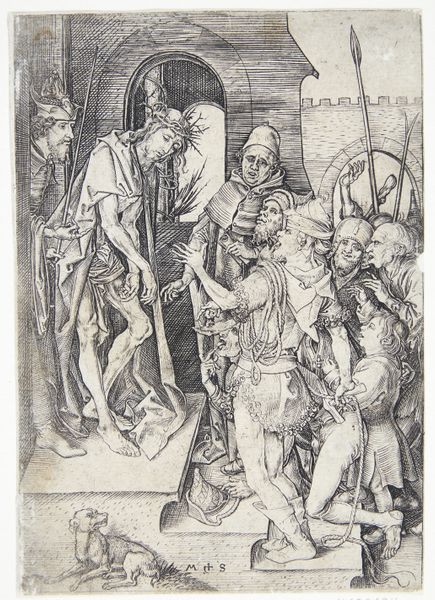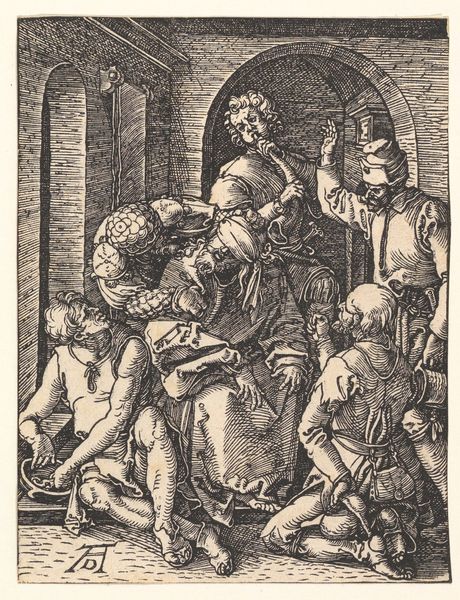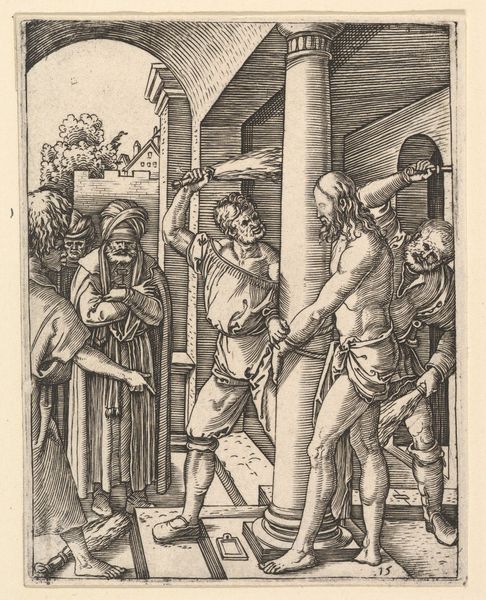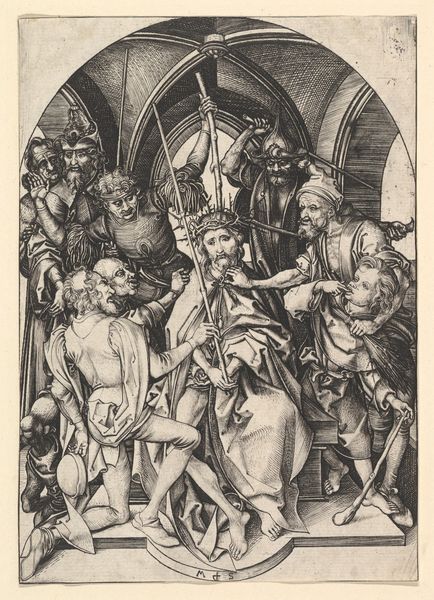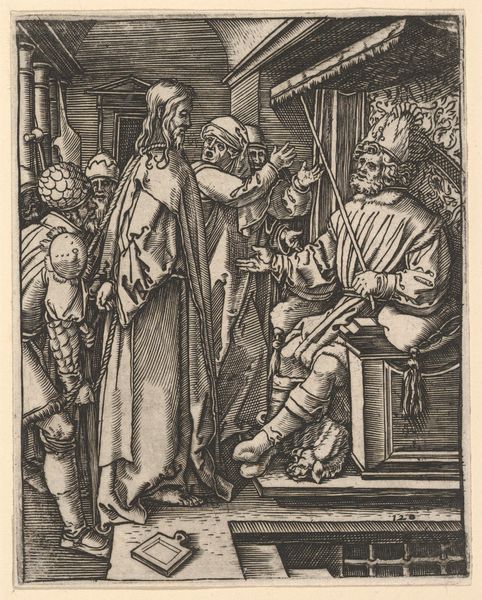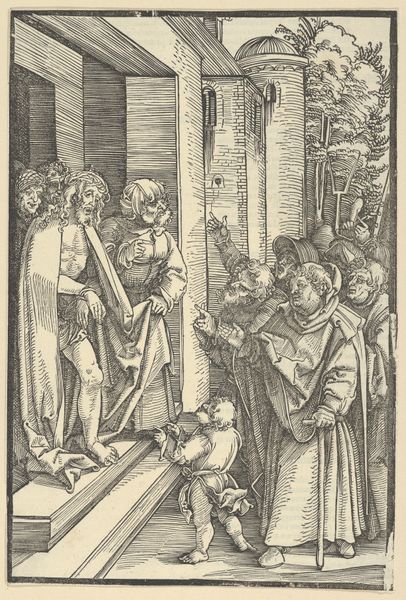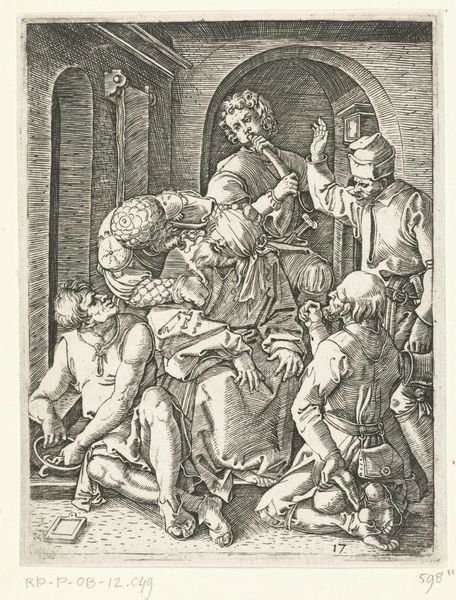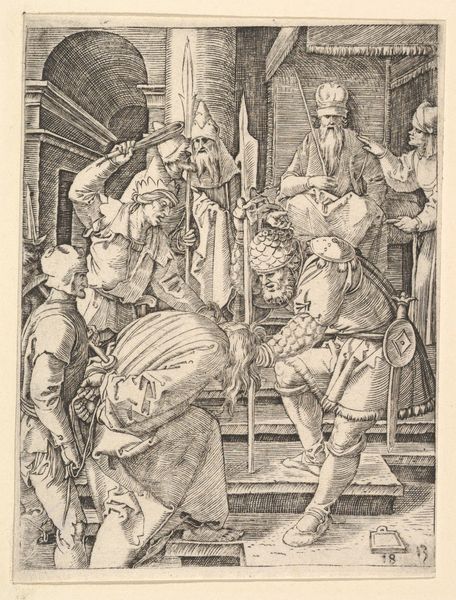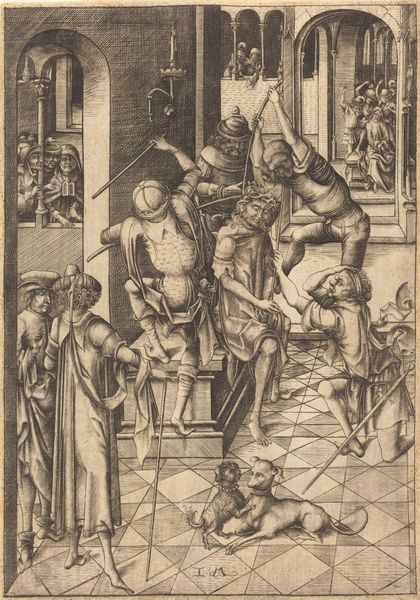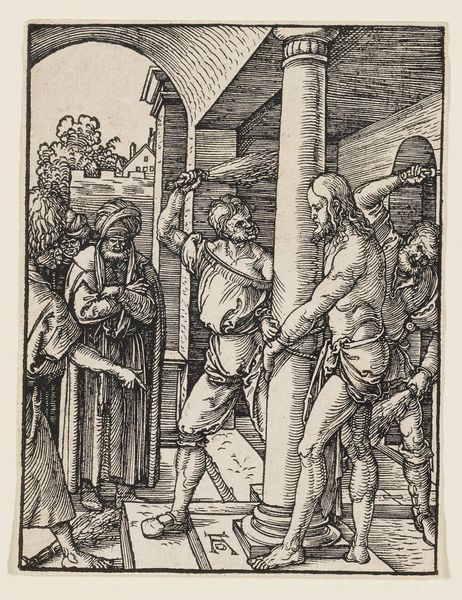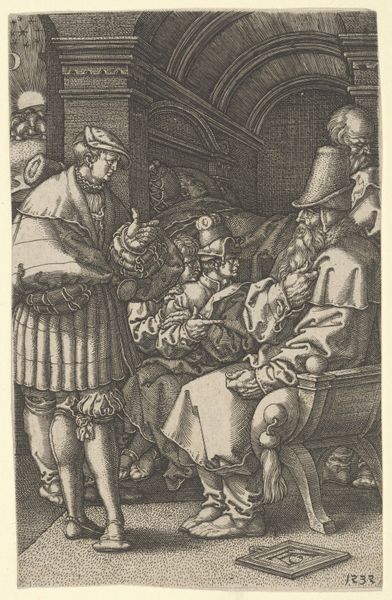
drawing, print, intaglio, engraving
#
drawing
#
narrative-art
# print
#
intaglio
#
dog
#
figuration
#
men
#
history-painting
#
northern-renaissance
#
engraving
Dimensions: Sheet: 6 3/8 × 4 7/16 in. (16.2 × 11.2 cm)
Copyright: Public Domain
Editor: Here we have Martin Schongauer's "Ecce Homo," created sometime between 1470 and 1482. It’s an engraving, so rendered in a monochromatic palette. The figures seem incredibly compressed, almost claustrophobic. How do you interpret this work, considering its historical context? Curator: Well, considering the "Ecce Homo" scene, it depicts a pivotal moment steeped in power dynamics, both then and now. This piece prompts us to question who holds authority and whose voices are suppressed. What does it mean to portray Christ, typically seen as a figure of ultimate power, in such a debased state? Editor: That's fascinating. It's hard to ignore how the gaze of the crowd feels almost predatory, adding another layer of discomfort to the scene. Curator: Exactly! Schongauer presents a complex intersection of religious, political, and social anxieties prevalent in the Northern Renaissance. Think about how anxieties surrounding class, religious reform and social hierarchies were playing out at the time. Do you see how he uses composition and character depiction to amplify these tensions? Editor: Now that you mention it, the varied reactions of the crowd, their individual expressions... it does feel like he's making a statement about social discord. Even the inclusion of the dog feels deliberate. Curator: Precisely. Animals in art are rarely just decorative. Their presence often underscores aspects of human behavior and societal norms. Looking at the figure of Christ - think of him, not just as a religious icon, but as representative of marginalized groups throughout history. How does this change your understanding of the work? Editor: I see what you mean. Considering Schongauer’s position during the early rise of religious reform, it feels like he is posing critical questions. It is less about reverence and more about examining societal flaws. Curator: Precisely, it’s about inviting dialogue about these inequalities. This work stands as a powerful reminder of the ongoing need for social justice and critical awareness. Editor: I never thought about it that way. I came in thinking it was a straightforward religious depiction, but now I see it as a commentary on the power dynamics and social issues of the time.
Comments
No comments
Be the first to comment and join the conversation on the ultimate creative platform.
